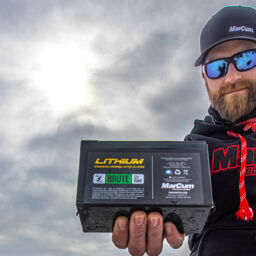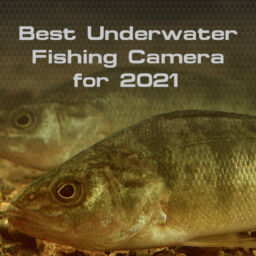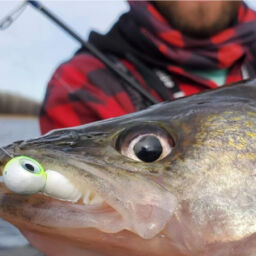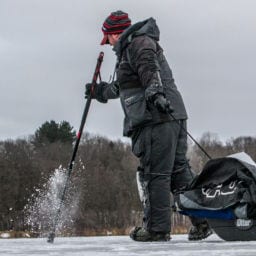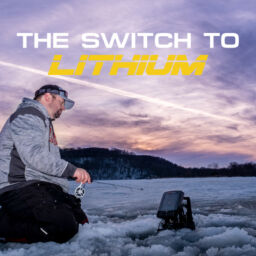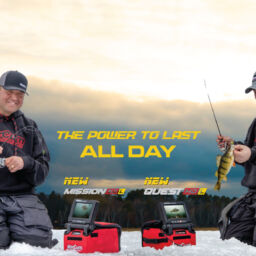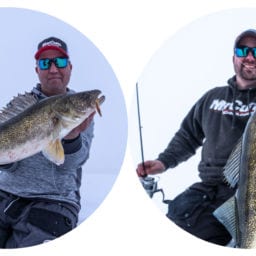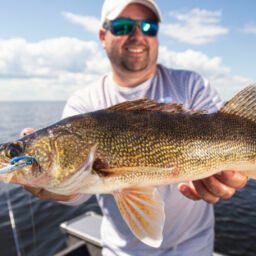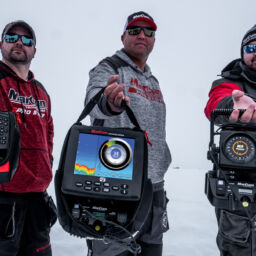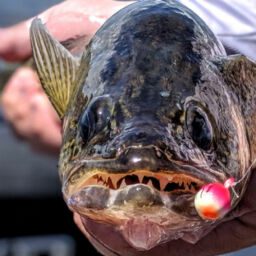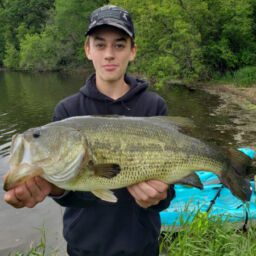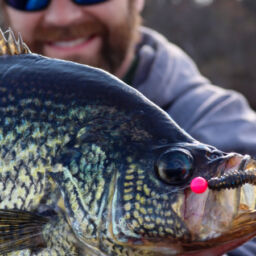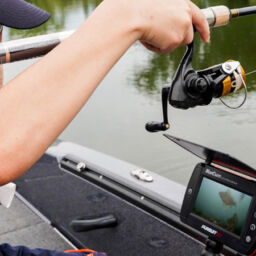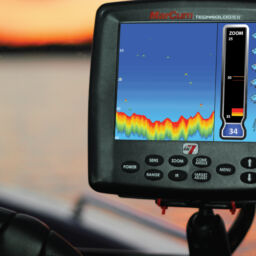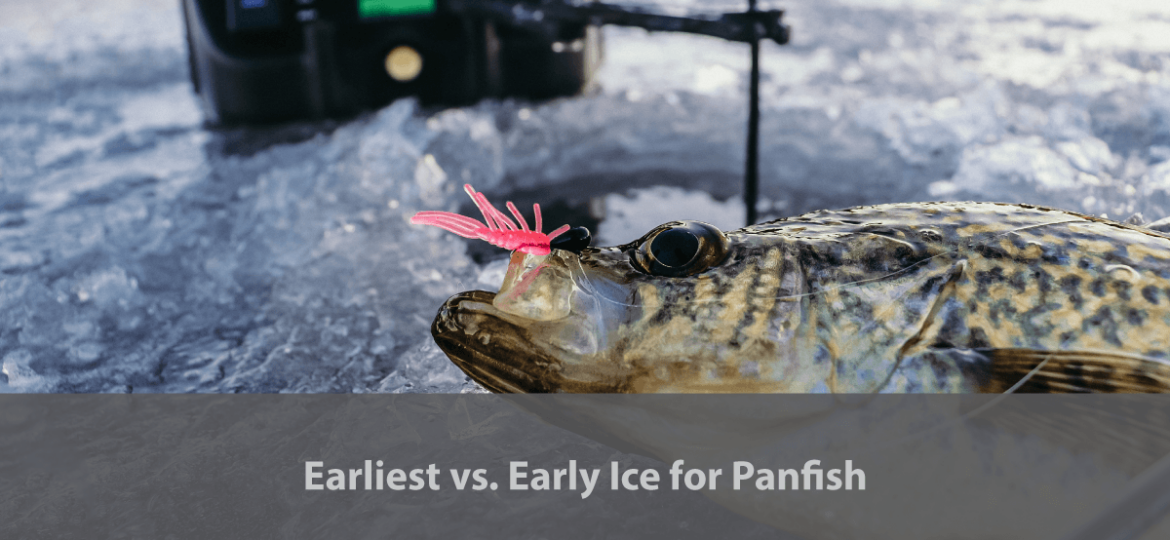
Earliest vs. Early Ice for Panfish
Deer season is nearly behind most of us, and thoughts of ice fishing get the blood flowing. You know the days; just a few inches of clear, black ice with sunfish twirling below and to the sides of the hole as you extract them from hungry schools off the edge of standing green weed beds. It’s typically the shortest part of the season, with 3-4 inches of safe, walkable ice being the very first and last trip most ice anglers will see with those conditions. Yet, these are the days that ice dreams are made of. Or are they? In recent years I’ve been talking to more and more ice heads that challenge that theory.
A Short Wait
Not all ice is created with the same uniformity. That’s true amongst many lakes in the same geographic area, as well as within the very same lake, but “most” lakes with comparable depths in a similar latitude will freeze up and form like amounts of ice. Yet, that small amount of variability certainly poses a safety hazard, especially in the age of social media and digital communication.
First ice junkies hit lakes in North Dakota and other extreme north portions of the ice belt, and the rest of us can’t help but feeling left out. Perhaps our local lakes have a skim of ice, and maybe they don’t, but falling through on a thin film of ice or scant ice surrounded by 4 inches produces the same outcome. From a safety perspective, it’s dangerous business, sometimes even with a chisel to guide your path on the earliest of ice.
Aside from the safety concerns, I’ve found more and more that a short wait has produced better fishing. Imagine gills and crappies under first ice, which are already programmed by nature to be wary of literally all things, given their proclivity for ending up as a bass or pike’s meal from time to time. Now, encased in a see-through layer, they hear different sounds above them, see shadows, and eventually feel vibrations of ice being drilled or chipped away just above their heads. It would have to be a harrowing experience for these fish which are again, also prey.
That’s not to say I haven’t had some great days on this very early ice. I can think of numerous bites where the ice looked nearly translucent it was so “black.” We caught fish on deeper weed edges, and towards dark especially, the bite really got going. We chiseled our way out, had more than 3 inches of solid, uniform ice in the area we delineated for travel with our same spud bars, and stuck to a singular area of the lake.
That said, going back in time, I’ve had more days where we had better fishing on anywhere from 4-8”es of cloudier ice. Typically, there was some snow on top to hide our shadows and cushion our movements. Fish were still in the same locations, but had a much brighter disposition. Bites could be found throughout the day, crescendo-ing into the evening hours but schools of gills and crappies seemed far easier to locate and then target.
The best part? We still had the lake relatively-speaking, to ourselves. Only a handful of hand-drag anglers and some daring ATV and snowmobilers were out there with us, and there were plenty of fish – and fishing areas – to go around. As an added bonus, ice was also relatively more safe across the board. Not only were fish less skittish and more accommodating, we were able to be focused more on the fishing and less worried about falling through. As it turns out, I’m not alone in my observations, with other notable ice anglers making this a frequent discussion topic at shows and shoots.
Early Ice Tactics
If we’re fishing early or earliest, fish are going to be where we last left them in the fall. That’s a trickier game for crappies than it is bluegills, but equally informed with your last bit of fall fishing if you were able to get out in November. In deeper, clear, water bodies where crappies are the star, this can be a small offshoot lake with a deeper basin, or part of the main lake itself.
Inside turns on this basin, just off of the weedy areas in 18 – 30 FOW can be productive as fish hover between suspending and relating to remaining invertebrates in standing green weeds. Bluegills will definitely be found along the weed edges proper, as they tend to run a bit smaller as a species, making them prime early ice meals for the biggest bass in the lake, and nearly any pike.
So often in shallow and weedy lakes however, bluegills and crappies will act similarly and be found in and among the weed beds. Standing coon tail and cabbage flats can be very productive, especially where there are natural breaks in them, inside turns, pockets and the like.
Inside weed lines can even be fished during this time of year in these kinds of lakes, provided the inside weed line is deeper than a few feet or so. I’m always amazed at how well these spots can produce, at times in 5 FOW or so, but it does take a stealthier approach. Usually it’s a long pause after drilling and setting up, then waiting for fish to cycle back down that inside weed line towards you.
Underwater cameras can inform the bite here immensely, both in terms of the weed bed quality and condition, but also in terms of the fish’s attitude. Make no mistake, there are likely some hungry and aggressive panfish in all but the worst conditions during this early ice period. They should respond to small spoons, even rattle baits, and something that fishes a bit faster.
Think loud first to attract, then scale down to tungsten and plastic if they don’t cooperate, moving eventually towards lead (slower) and live bait, scaling down in size along the way. When fish are finicky, don’t fight it, but realize that you should have options for some active fish during this time of year.
So there you have it, earliest isn’t always best when it comes to panfish, at least in my experience and observations. Life on the hardwater is a bit safer when you choose to let that first ice cloud up a bit, have a touch of snow cover for easier and stealthier approaches, and fish hard from there.


